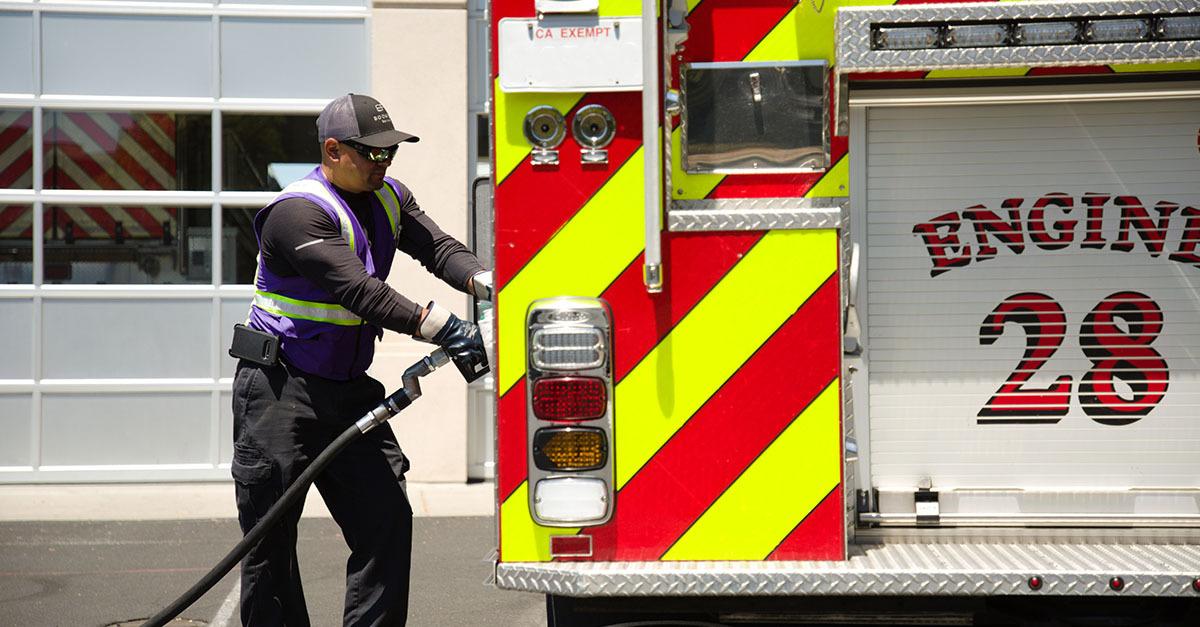When Disaster Struck: Booster Services Active Fire Incident

This article was originally published on Booster Fueling Change
During natural disasters, first responders like fire departments, law enforcement, and emergency medical services save lives, protect property, and mitigate the timeline to full recovery.
While it is an afterthought during normal operations, fuel is critical to keep generators running and emergency vehicles rolling during emergency events. Traveling to and from gas stations that are still online during an emergency disrupts response efforts by taking time and attention away from the emergency at hand.
All emergency response operations require a disaster fuel plan to ensure an appropriate supply of fuel for equipment, tools, generators, and vehicles. The U.S. Fire Administration and FEMA recognize the importance of on-site fuel availability, noting in their joint disaster response guidelines, “...the fact is that if logistics fail, and fuel, food and other supplies are halted, tactical operations could be markedly hampered.”
When the California Department of Forestry and Fire Protection (CAL FIRE) battled a nearly 600-acre blaze near San Diego this past summer, Booster’s on-site mobile fueling delivery service helped ensure operational continuity, lives saved, property saved, and full containment.
On June 13, 2022, the Border 13 fire incident broke out at approximately 1 PM four miles west of the Tecate Border Crossing in San Diego County. By 3 PM, the fire spread to 350 acres, and by 5 PM it consumed an additional 227 acres - with no sign of containment. Located near the California-Mexico border, the fire necessitated the rescue of five people, two of whom were hospitalized for their injuries. Nearly 80 firefighters were on scene, according to news reports.
Less than three months before the Border 13 fire, CAL FIRE entered into an agreement with Booster to provide mobile fueling on demand (MFOD) to its fleet of vehicles during emergency responses.
In line with its MFOD agreement with Booster, CAL FIRE contacted Booster at 5:45 PM on June 13, and Booster’s operations team immediately leapt into action by analyzing staffing resources, assets, site logistics, and responsibilities to reliably — and rapidly — respond to CAL FIRE needs over the next 24 hours.
In less than 12 hours, the operations team allocated a 2,800-gallon tanker loaded with clear diesel to the scene of CAL FIRE’s San Diego command center from Booster’s yard in Orange County.
Once on-site, the Booster’s Service Professionals (SPs) began around the clock service, pumping approximately 1,000 gallons over the next 37 hours. Booster refueled nearly 50 individual vehicles ranging from CAL FIRE-owned emergency vehicles to contracted heavy equipment such as the bulldozers used to build fire breaks. A total of four SPs rotated out every 10-12 hours to ensure fresh and attentive mission support.
Booster’s tanker was pre-certified by CAL FIRE to serve active fire incidents. The company had gone through a pre-inspection to ensure the tanker was adequately equipped with the appropriate water and safety equipment to satisfy the fire department’s health and safety measures. Booster continues to serve the first responder community, assisting other customers like the San Mateo Fire Department.
“This live fire incident was a great example of Booster’s ability to respond quickly to these types of disaster events, which will become more critical as we continue to deal with increasingly devastating wildfires here in California,” said Mark Philipp, Operations Manager for Southern CA. “Emergency events illustrate the value of collaborative partnerships with our first responders and state agencies.”

